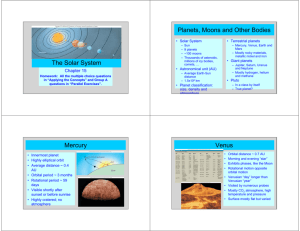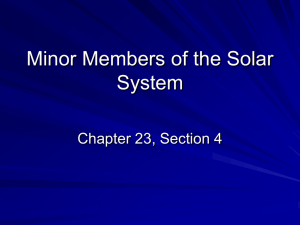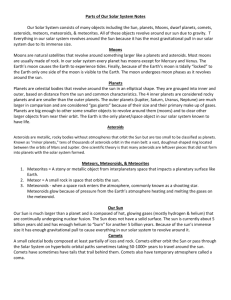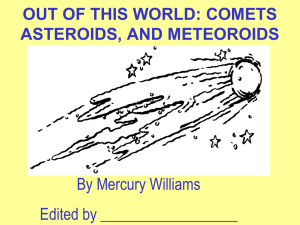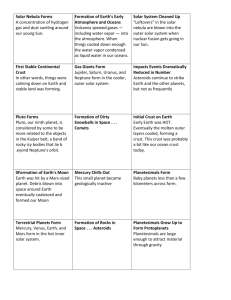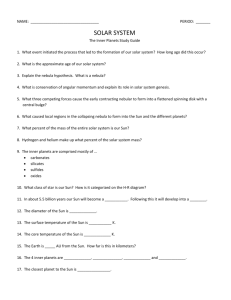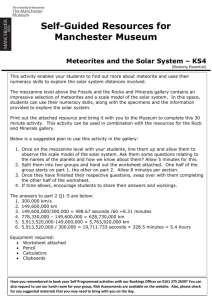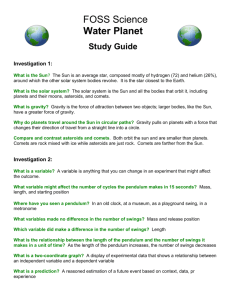Unit 3 Review Sheet
advertisement
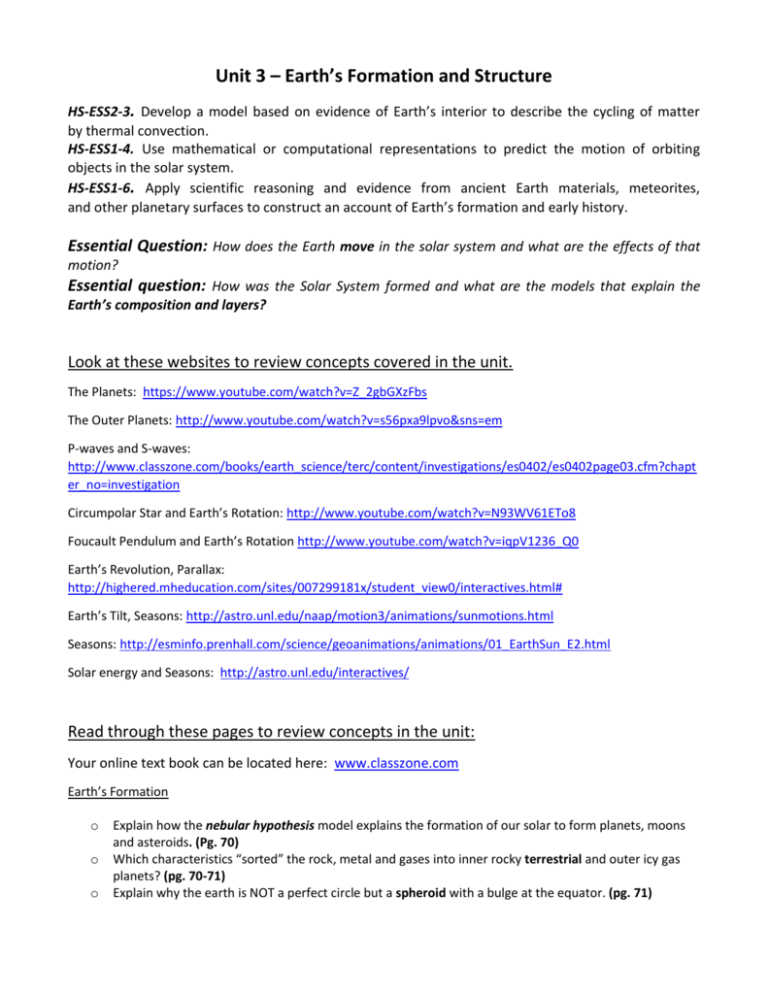
Unit 3 – Earth’s Formation and Structure HS-ESS2-3. Develop a model based on evidence of Earth’s interior to describe the cycling of matter by thermal convection. HS-ESS1-4. Use mathematical or computational representations to predict the motion of orbiting objects in the solar system. HS-ESS1-6. Apply scientific reasoning and evidence from ancient Earth materials, meteorites, and other planetary surfaces to construct an account of Earth’s formation and early history. Essential Question: How does the Earth move in the solar system and what are the effects of that motion? Essential question: How was the Solar System formed and what are the models that explain the Earth’s composition and layers? Look at these websites to review concepts covered in the unit. The Planets: https://www.youtube.com/watch?v=Z_2gbGXzFbs The Outer Planets: http://www.youtube.com/watch?v=s56pxa9lpvo&sns=em P-waves and S-waves: http://www.classzone.com/books/earth_science/terc/content/investigations/es0402/es0402page03.cfm?chapt er_no=investigation Circumpolar Star and Earth’s Rotation: http://www.youtube.com/watch?v=N93WV61ETo8 Foucault Pendulum and Earth’s Rotation http://www.youtube.com/watch?v=iqpV1236_Q0 Earth’s Revolution, Parallax: http://highered.mheducation.com/sites/007299181x/student_view0/interactives.html# Earth’s Tilt, Seasons: http://astro.unl.edu/naap/motion3/animations/sunmotions.html Seasons: http://esminfo.prenhall.com/science/geoanimations/animations/01_EarthSun_E2.html Solar energy and Seasons: http://astro.unl.edu/interactives/ Read through these pages to review concepts in the unit: Your online text book can be located here: www.classzone.com Earth’s Formation o o o Explain how the nebular hypothesis model explains the formation of our solar to form planets, moons and asteroids. (Pg. 70) Which characteristics “sorted” the rock, metal and gases into inner rocky terrestrial and outer icy gas planets? (pg. 70-71) Explain why the earth is NOT a perfect circle but a spheroid with a bulge at the equator. (pg. 71) Earth’s Structured Layers o Describe how earthquake P and S earthquake waves travel through solids and liquids. (pg. 228) o The earth’s layers are distinguished by their density, temperature and composition, with the denser, hotter material on the interior. (pg. 72) o Describe the thickness of the Earth’s crust’s and the two types of rock that it’s composed of. (pg. 73) o Compare the density and location of granitic rock with ocean floor rock. (Density of Earth’s Rocks Lab) o Describe the composition and motion of the asthenosphere using a lava lamp. (page 73) o What is the size, composition and location of the mantle (pg. 72) o Which of Earth’s layers is responsible for Earth’s magnetic field? What is it composed of? (pgs. 72, 74) o Describe the temperature, pressure and composition of the Earth’s inner core. (pg. 72) Evidence of Earth’s major layers o Howe did P and S-waves show evidence that the Earth’s outer liquid core is liquid? (pg. 228 and ES0402) o What are the 3 sources of Earth’s internal heat (pg. 73) Comets, Asteroid and Meteors o o o o Describe the composition of comets. (page 602) Describe the eccentricity of comets orbits. (pg. 602) Where are asteroids located in the solar system and what are they compose of? (pg. 603) Describe the composition of meteorites. Why are they called “shooting stars” (pg. 604) Earth’s Rotation o o o o The circumpolar constellations show evidence that the earth’s rotates in what direction? (pg. 617) What observation explains why the Sun appears to rise in the east and set in the west? (pg. 77) How do the Foucault pendulum and Coriolis Effect of winds show evidence of Earth’s rotation? (pg. 75) Explain why some locations on Earth (latitudes) rotate at a different rate of speed? (pg. 76) Earth’s Revolution o Describe how parallax of the stars provided evidence that the Earth revolves around the Sun. (pg. 80) o Describe the shape, direction and length of Earth’s orbit around the Sun. (pg. 80) o Describe how the Earth’s tilt changes the Sun’s angle in the sky, the intensity of solar energy and the temperature at different locations on Earth during the year. (pg. 81-82 and pg. 374-375) Constellations o o How do the constellations appear to change in the sky throughout the year? (pg. 80) Be able to recognize constellations: The Big Dipper, Little Dipper, Orion, Cassiopeia (pg. 617) Unit Vocabulary - Know these terms from the unit: Asthenosphere Asteroids Equinox Circumpolar constellations Comets Coriolis Effect Crust Inner core Magnetic field Mantle Meteorites Nebular Hypothesis Outer core Parallax Revolution Rotation Solstice


